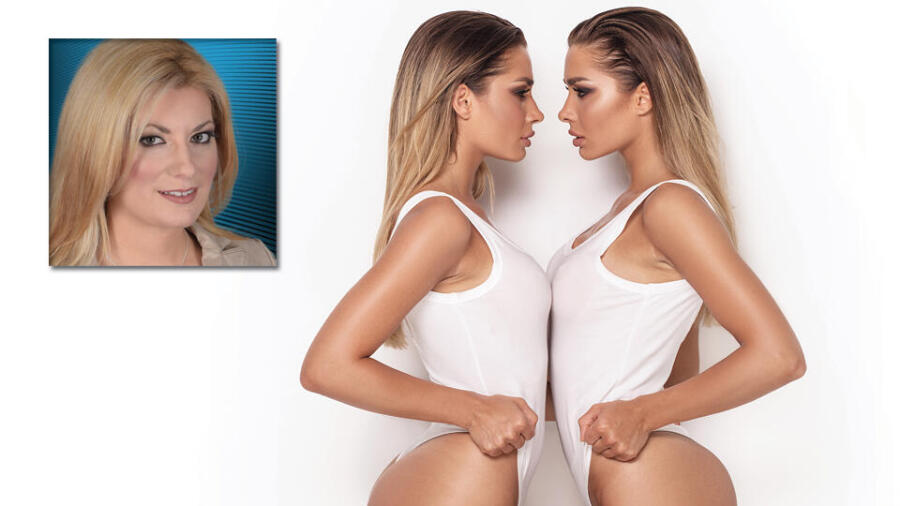There will soon be a new tribunal in town in which to pursue copyright claims. As part of the omnibus spending bill, passed in late 2020, the federal government included the Copyright Alternative in Small-Claims Enforcement Act (CASE Act). The intent is to provide a streamlined process for resolving small-value copyright infringement cases through a new Copyright Claims Board (CCB). There is still much to be seen, as the CCB is not operational yet, but it could potentially provide a useful tool for models, studios and others with small, yet important, copyright claims.
If you’re in the adult industry, you probably already know that when infringement is committed by a user on an online social sharing site, a way to get the offending content removed is via a notice-and-takedown procedure. The copyright owner essentially provides a notification of infringement and requests the site take it down; however, no money damages can be awarded in that process. Also, to pursue any other types of infringement, an action must be brought in a court, which can be expensive.
This is where the CCB is supposed to come in. It will be comprised of a panel of three copyright claims officers who hear copyright disputes where a plaintiff has a claim for money damages, a claim for a declaration of noninfringement, a claim for misrepresentation in connection with a notice-and-takedown procedure or a counterclaim by a defendant against a plaintiff.
As a prerequisite to bringing a claim before the CCB, a copyright registration must be issued. This means that the copyright owner (presumably the plaintiff) must have submitted an application for copyright and been granted the registration. It’s important to note that this process can take around nine months, or sometimes more, so filing early is really important in order to preserve your rights over your content.
The statute of limitations (SOL) is the time limit under the law for bringing an action. The SOL for bringing a claim before the CCB is three years from the time the claim accrued (i.e. usually, when the infringement happened), so it is important to move quickly when you learn of an infringement of your videos, images, etc.
Participation in a CCB proceeding is voluntary and the plaintiff or defendant may instead choose to pursue a claim, counterclaim or defense in another court. Accordingly, if you are the plaintiff and bring a claim before the CCB, the defendant may opt to move it to federal court.
In general, there are two types of damages which can be collected for copyright infringement: actual and statutory. In short, “actual damages” are losses on the part of the content owner due to the infringement and profits wrongfully made by the defendant because of the infringement. For example, in a case where a third party pirates a video and makes money from it, while the model or studio loses income as a result, both the losses incurred and the income the pirate earned are actual damages. The losses can be hard to prove, however.
“Statutory damages” are damages provided by law, and do not need to be proven. In general, statutory damages are only available when a copyright is timely registered — either within three months of publication, or before the infringement occurred. After that, only actual damages are typically collectable, and the difficulty in proving them usually means a lower award.
In determining an amount of damages, the CCB can, of course, consider actual damages. For works that are timely registered, statutory damages may be awarded up to $15,000 for each work infringed. For works that are not timely registered, statutory damages may be awarded only up to $7,500 per work infringed, or a total of $15,000 in any one proceeding. Regardless, no more than $30,000 may be collected in a single proceeding. Attorney fees and costs may not be recovered, except where there was bad faith activity.
The CCB proceedings are meant to be centralized and efficient. With a few exceptions, they may take place via written submissions, hearings, conferences online or through the phone. Unfortunately, in exchange for this expeditiousness, the law essentially requires you to accept the decision of the CCB, as there is not much of a substantive appeal process, except for some procedural reviews.
To gauge the utility of the CCB, we’ll have to see how things go as it is set up and starts hearing cases. On one side of the coin, a small-claims copyright court sounds like a great idea, but on the flip side, lack of a substantive appeal process is a big problem. It’s also probable that you’ll still need an attorney since the process will likely require various formalities that are best achieved with a lawyer. As a plaintiff, when you add attorney fees to the equation, a $30,000 cap on damages isn’t as attractive.
So, performers, studios and other content creators, keep an ear out for how things unfold with the CCB. It’s definitely something you’ll at least want to be aware of and consider, in case you have a copyright issue once the forum is available. Like many things in life, a cost-benefit analysis at the time will help you decide on a direction.
Disclaimer: The content of this article constitutes general information, and is not legal advice. If you would like legal advice from Maxine Lynn, an attorney-client relationship must be formed by signing a letter of engagement with her law firm. To inquire, visit SexTech.lawyer.
Maxine Lynn is an intellectual property (IP) attorney with the law firm of Keohane & D’Alessandro, PLLC. She focuses her practice on prosecution of patents for sex technology, trademarks for adult business brands and copyrights for porn and other creative materials. Through her company, Unzipped Media, Inc., she publishes the “Unzipped: Sex, Tech & the Law” blog and the “Sex Tech Patent IndeXXX” bulletin at SexTechLaw.com.







